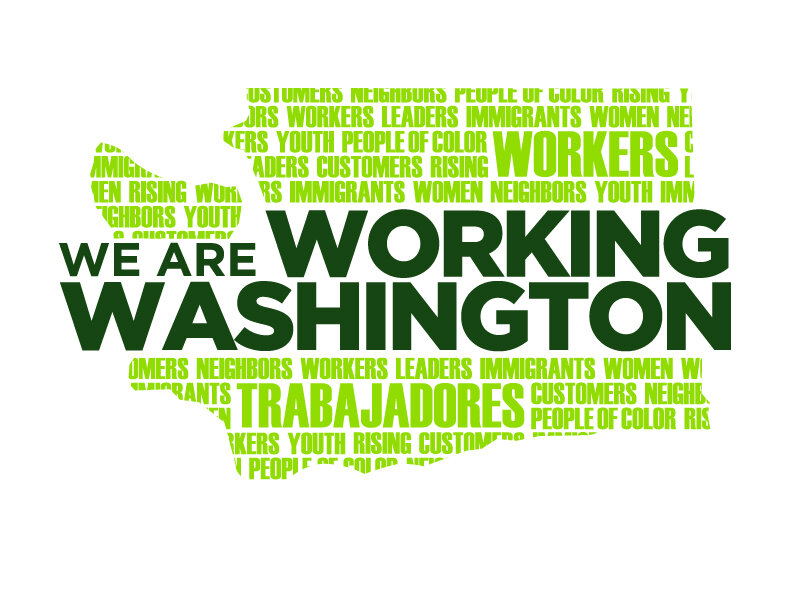Washington L&I releases latest draft proposal to update overtime rules, with salary threshold between 2 and 2.5 times minimum wage
This week, the Washington Department of Labor & Industries (L&I) released its latest draft proposal in the process of updating its overtime rules – a change that could be one of the biggest advances for workers since the fight for $15. After four decades of inaction, L&I has the power to return billions of dollars in time and money to hundreds of thousands of workers, but it must take bold steps to ensure as many workers as possible become overtime eligible under its new rules.
“It’s been over 40 years since Washington updated its overtime rules,” said Rachel Lauter, Executive Director of Working Washington. “In the 1970s, when the rules were last updated, nearly 65% of salaried workers received time-and-a-half pay when they worked more than 40 hours a week. Now, less than 10% do — and it’s not because people are working less. We urge L&I to get these new rules into place as soon as possible. Our overtime laws have fallen far out of touch with our economy and workers have waited long enough. It’s about time.”
The latest draft lays out a range of possible outcomes for the new salary threshold that determines when a salaried worker qualifies for overtime, from 2 times to 2.5 times the minimum wage. That means that all salaried workers paid less than $49,920 per year (if L&I settles on 2 times the minimum wage) or less than $62,400 per year (2.5 times) will get time-and-a-half when they work extra hours over 40 a week. The new overtime rules will mean hundreds of thousands of Washington workers will get more money in their paychecks, more free time in their week, or both.
“Businesses can never pay you what your time is worth — your time is invaluable,” explained Sidney Kenney of Tumwater, a salaried service provider and longtime salaried restaurant worker who works at least 55 hours a week for a $40,000 salary. “But they don’t even try. I don’t want the money, I want the time.”
From the beginning of this process, Working Washington has advocated for a new salary threshold of triple the minimum wage, or about $75,000. Overtime pay is a basic standard and should not be the exception to the rule, so the threshold should be set at three times the minimum wage to include as many workers as possible. When overtime pay was first established in federal law in 1938, the initial threshold was set at triple what a full-time, minimum wage worker would be paid. When L&I last updated the overtime threshold in 1976, they set it at 2.7 times the minimum wage. Yet, given the current range being considered by L&I, setting the new threshold at 2.5 times the minimum wage would still represent a significant win for hundreds of thousands of workers across our state.
Contact: Before November 26, contact Josh Fogt at 206-330-6659 or josh@workingwa.org to arrange an interview with a worker affected by the issue or an expert in the field. November 27 or later, contact Sage Wilson at 206-227-6014 or sage@workingwa.org.
Background:
How it works now:
Washington state’s current outdated rules give companies an all-too-simple loophole to get out of paying overtime, no matter how many hours they make someone work. A company simply has to call someone “exempt” and pay them more than the threshold for overtime exemption — just $250/week in state rules or $455/week for those covered by federal rules — and they can wriggle out of paying them anything extra for the extra hours. (Note that both of those thresholds are less than what a full-time minimum wage worker earns in Washington state.) Technically there are rules about what kind of jobs can be exempt, but usually your employer is the one who tells you whether you get overtime or not. If you think they're wrong, you maybe could file a claim over that classification. But unless you have a lawyer on retainer, in the day to day reality of the workplace, your employer gets to decide.
How did we get here:
This week’s announcement is the latest draft rule in a months-long rulemaking process which included numerous rounds of substantial stakeholder comment, a detailed data review, and more than a thousand workers calling for action, including many who shared their own personal experience about the impact of out-of-date overtime rules.
What’s next:
L&I will hold public listening sessions on this draft rule in Seattle on November 27, in Yakima on November 28, and in Vancouver on November 29, then accept additional written comment until December 14. The draft rule will be analyzed for economic impact and multiple additional rounds of feedback will be accepted before the rule is finalized.

